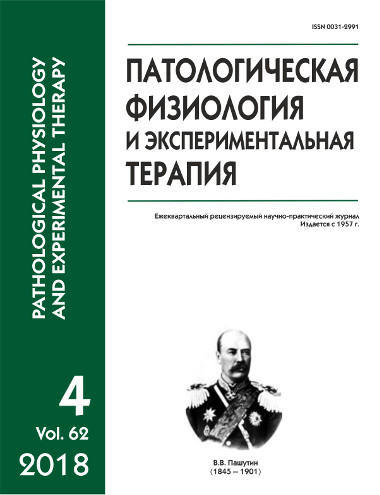Time-restricted IRE1 activity: impact on cell survival
Abstract
Protein unfolding in the endoplasmic reticulum (ER) induces a particular form of proteotoxic cellular stress — ER stress: immature and incorrectly folded proteins can accumulate in the ER lumen and form cytotoxic aggregates. Under ER stress, the non-specific protective mechanism, Unfolded Protein Response (UPR), is activated. The key element of UPR is the signaling pathway mediated by transmembrane ER protein IRE1. The activated endoribonuclease domain IRE1a causes non-canonic XBP1 mRNA splicing, which leads to the synthesis of an active transcription factor sXBP1. It induces the expression of proadaptive genes. In addition to its cytoprotective function, IRE1 is also a key regulator of ER stress-induced cell death. It is assumed that with prolonged activation, IRE1 switches from proadaptive to proapototic regulation. Aim. This paper is devoted to studying possible IRE1a switching from proadaptive to proapoptotic regulation. Using the inhibition of the IRE1a endoribonuclease domain by the compound STF-083010, we analyzed the dependence of cell survival on the period of IRE1a activity under ER stress of varying intensity. We observed the cell specificity of this dependence: in non-secreting Jurkat cells, inhibition of IRE1a in the early stages of intense stress was less toxic than in the later ones; in secreting EA.hy926 cells, an inverse relationship was observed. Purpose of the study. The study of the dependence of cell survival on the duration of the activity of the signaling pathway, mediated by the ribonuclease activity of IRE1, during endoplasmic reticulum stress. Methods. Using RT-qPCR, inhibition of the IRE1α endoribonuclease domain by compound STF-083010, the dependence of cell survival on the period of IRE1α activity during ER stress of various intensities was analyzed. Results. IRE1a exerts a predominantly cytoprotective effect under intense stress — inhibition by the compound STF-083010 reduces cell viability. The character of the dependence of cell survival on the period of IRE1α activity under ER stress is cell-specific: the survival of non-secretive T-lymphoblasts Jurkat was higher when IRE1α was inhibited in the early stages of intense stress than in the latter; for secreting endotheliocyte-like cells EA.hy926, an inverse relationship was observed.






